Did you know the penalties for a DUI can escalate faster than you might expect? Many are shocked when they learn how drastically these penalties can change with each subsequent offense.
In today's world, understanding the variations between first-time DUI offenses and repeat offenses is crucial. Legal systems are evolving rapidly, and being informed can make a significant difference in legal outcomes.

Contrary to common belief, a repeat DUI offense doesn't just mean a repeat of the same penalties. The consequences can be staggeringly harsher, often including longer jail time and hefty fines. Some regions impose mandatory installation of ignition interlock devices for repeat offenders, which can be both inconvenient and costly. But that’s not even the wildest part…
In some states, a subsequent DUI offense can lead to the offender having their license permanently revoked. Imagine being unable to drive indefinitely, affecting employment and daily life. Furthermore, insurance rates can skyrocket, making car ownership prohibitively expensive. But the surprises don’t stop there…
As you read on, you'll uncover shocking truths about how some legal jurisdictions treat these offenses. What happens next shocked even the experts. Dive in to discover the full impact on life and liberty...
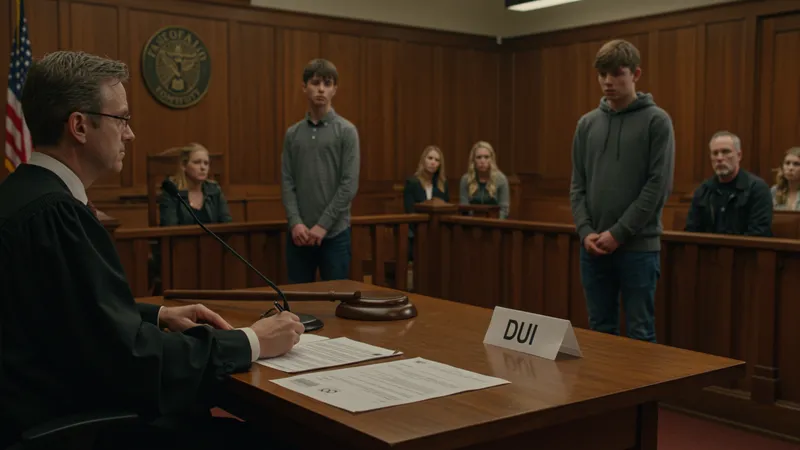
For a first-time DUI offender, the penalties might seem relatively mild. Typically, jurisdictions impose fines, short license suspensions, and possibly some mandatory education programs. These measures are designed to correct behavior with minimal disruption to everyday life. However, even a first-time offense can have lasting consequences, especially where job applications are concerned.
The stigma of having a DUI on a record can affect employment opportunities significantly. Many employers conduct background checks, and a DUI can raise red flags for roles that require a high level of responsibility or driving. Yet, there’s more beneath the surface: the emotional and social impact can be just as daunting, affecting personal relationships, too.
In some states, additional penalties may be introduced, like community service or probation. These serve as fresh reminders of the offense but can offer a pathway for reform. But there’s one more twist: Some local laws empower judges to impose creative sentencing approaches like public humiliation stints, further exacerbating social repercussions.
What you read next might change how you see this forever. Let’s delve into how these experiences could vary and set the stage for what happens if there’s a next time.
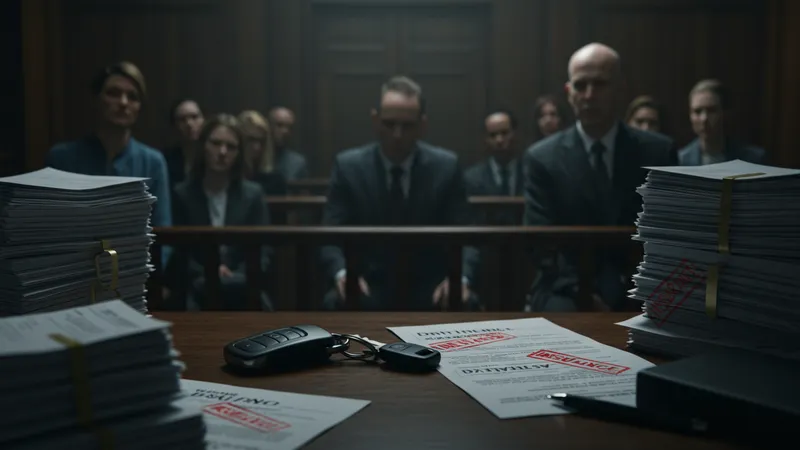
While the first DUI might not derail your life, a second offense flips everything upside down. Repeat offenders are frequently slapped with doubled penalties, facing mandatory minimum jail times that can be quite significant. This legal escalation is designed to deter habitual offenders but might also lead to heightened societal isolation.
Longer incarceration periods aren't the only concern. The financial burden magnifies as well, with fines that could bankrupt the ordinary individual. Insurance companies, known for their stringency, sharply increase their rates or outright refuse coverage, leaving drivers in a precarious position where even the simple act of buying a car becomes daunting.
One of the more severe repercussions includes potential felony charges for a third or subsequent DUI in some locales, considerably raising the stakes. This transforms a repeated lapse in judgment into something with lifelong ramifications, including difficulties in securing housing or employment.
And if you think that’s severe, you haven’t heard the half of it. Some jurisdictions are now implementing publicized sentencing, where offenders’ names, offenses, and penalties are made public, a move that’s stirring quite the debate! Ready to unravel this further? Let’s plunge into the measures and reforms that await...
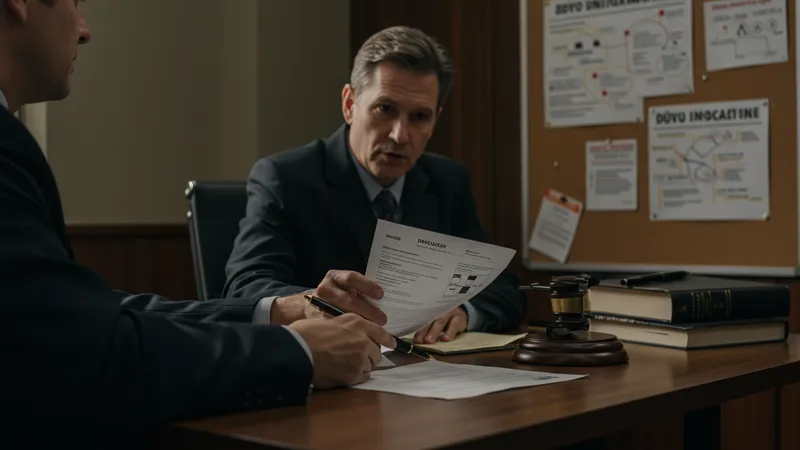
Despite the daunting nature of repeated DUI offenses, there are legal avenues that some exploit to mitigate penalties. Knowledgeable defenses look deeply into procedural errors during arrest, arguing the validity of field sobriety tests, and scrutinizing breathalyzer maintenance logs to find cracks in enforcement measures.
For those seeking redemption, legal tools like pre-trial diversion programs can be a godsend. This option may be available to some repeat offenders who accept treatment for substance issues, potentially leading to reduced sentences or charges dismissed upon successful completion.
But the crux lies in hiring top-tier DUI lawyers who utilize advanced tech, like breath testing machine recalibration analytics offered by innovators such as Smart Start Inc.. They leave no stone unturned for clients, scrutinizing every detail to fight your case.
Yet, here’s the puzzle: while some might succeed in leveraging these strategies, others might not be as lucky, with variations often dictated by nuances in state law. How exactly does the landscape differ across jurisdictions? There’s more eye-opening to come in how geography plays such a significant role…
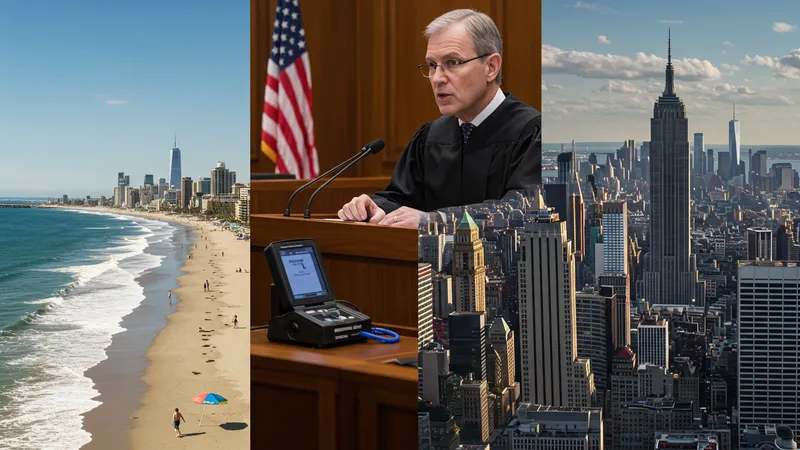
California might be known for its sunny beaches, but it’s no stranger to strict DUI laws. Some areas within the state impose ignition interlock devices even on first-time offenders, living proof of variation in enforcement even within one legal jurisdiction.
Cross over to New York, and the landscape changes remarkably. Here, a third-time offender is in for a felony charge with repercussions that might echo for years. Strategies that work in one state often falter in another, underscoring the importance of where the offense happens.
Moreover, states like Texas are infamous for their harsh penalties. With substantial jail time even for first-time offenders, it leaves little question about what subsequent charges would mean — a punitive deterrent that arguably borders on draconian.
But not every state follows such stringent protocols. Some Midwest states offer more rehabilitative approaches, focusing on the root of the problem rather than punishment alone. If only all jurisdictions embraced their empathy. Discover the intriguing exceptions in the coming pages...
The hard facts and the numbers are one side of the story, but understanding personal journeys highlights the human element often ignored in DUI offenses. For instance, consider the case of Michael, whose employment hinged on driving privileges. Post-first offense, he found alternative employment but lived in constant fear of slipping up again.
Then there’s Sarah, a single parent who aimed to correct her course but found herself ensnared after a second DUI. Her story echoes thousands who underestimate the social stigmas that paralyze advancement even after the legal hurdles are navigated.
Support networks can be both lifeboats and traps. Family members sometimes disengage with repeated offences, unable to bear the emotional burden. Michael found solace in a community group, turning the isolation into an opportunity for growth.
But what about those who lack such support? The pages ahead talk about untapped resources and community innovations that are turning lives around one step at a time. The next twist in their journey might be more heartening than you’d think…
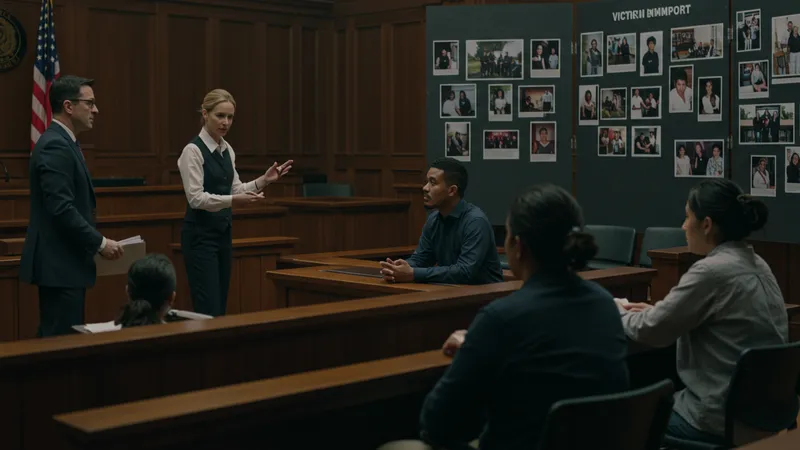
Court-mandated education programs may first appear punitive. Yet, for many, these initiatives become lifelines. Practical courses that delve into not just the mechanics of decision-making, but also address the underlying psychological components of substance use, have been transformative for many individuals.
Communities have also experimented with innovative sentencing. Programs that include victim impact panels try to humanize the consequences of actions, shifting perspectives from mere statistics to real emotional stories vividly portrayed by survivors of DUI incidents.
Meanwhile, as states continue testing new rehabilitation frameworks, there’s a brewing consensus that traditional jail time might not be as effective as previously thought. What excites pundits are the prospects of such reforms spreading across the nation, possibly becoming the norm.
Yet, implementation is key – these initiatives require resources, and without proper funding, they can flounder. Could public-private partnerships be the game-changer? Explore this potent idea ahead as we dive into what investors and social champions are doing to reshape the landscape…
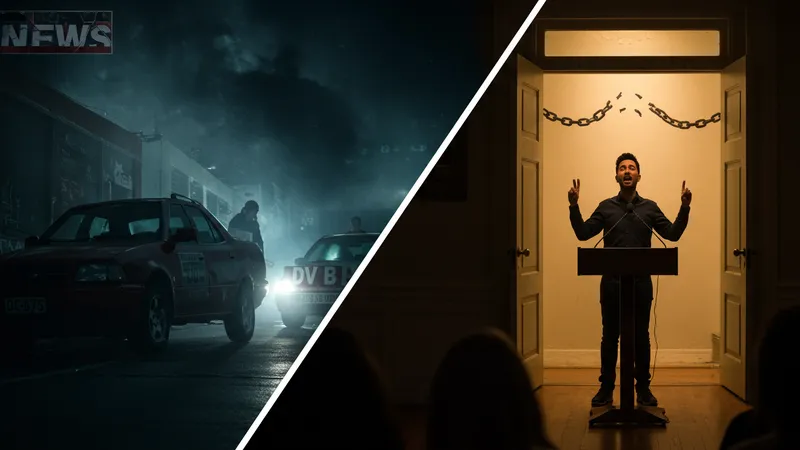
How DUI offenses are portrayed in the media shapes public opinion more than most realize. Sensationalized stories often skew perceptions, painting offenders with broad strokes that flatten complex issues into caricatures of moral failure.
On the flip side, some media have started documenting rehabilitation success stories, spotlighting individuals who’ve turned past mistakes into a platform for change. Such narratives can swing public dialog, pushing for more rehabilitative justice models.
It’s easy to dismiss DUI stories as mere tabloid fodder. Yet, these stories underscore broader societal concerns about substance use and reform. With media as a powerful tool to shift narratives, the conversation about how offenders are perceived becomes critical.
Could media efforts collectively breathe new life into legal reforms? Explore this intriguing possibility and what role you might play in it coming to fruition. What you discover might just surprise you…

Policy reforms typically evolve at a glacial pace, but some regions are accelerating change with new DUI handling approaches. These involve deploying smart technologies and engaging AI to monitor high-risk offenders, aiming to prevent incidents before they happen.
Recent developments in predictive analytics allow police to anticipate hotspots for potential DUI offenses. This proactive stance could mean reallocating resources for prevention rather than just response, a significant shift in public safety strategies.
Tech giants collaborating with law enforcement is an exciting prospect, bringing advanced tools into the fray. Could data-driven methods draft more effective laws? The impacts are still being studied, but early results suggest promising applications in DUI management.
Change is on the horizon, but as always, resistance persists. What blocks these advances thus far? We delve into hidden policy roadblocks just ahead that you might find eye-opening. Venture further as we peel back the layers of policy stagnation…

Paying hefty fines and insurance surges are just the tip of the iceberg. A DUI conviction reaches deeper into financial stability than most are led to believe. For instance, court-mandated programs and devices like ignition interlocks can drain personal finances rapidly.
Then there’s job-related repercussions; some might lose the privilege of company vehicles or shift work duties, which can entail a drop in income or even job loss. Continued employment after a DUI becomes an uphill battle for many, often necessitating career pivots.
The unforeseen expenses mount as offenders pay for alternative transportation and potential legal battles, a hidden cost many fail to anticipate. The long-term financial repercussions could indeed stretch far beyond what’s covered by immediate DUI penalties.
Have you truly considered the ramifications on housing stability and retirement savings? These are the deeper financial pitfalls we’re unwrapping next. Hold on tight as this roller-coaster ride of fiscal impacts still has another twist awaiting…
A story many miss is the one concerning family dynamics. The impact of DUI can extend to partners and children, generating stress that tears at family fabric. There’s often a perceived betrayal, straining trust, and causing emotional rifts that take years to heal.
Children of offenders face stigma at schools, triggering questions about their family life. Parents must navigate these conversations delicately, often without adequate support. Over time, resilient families find strength through this turmoil, yet others crumble beneath its weight.
How societies support these families varies dramatically, with few frameworks in place to offer assistance beyond the offender. Advocacy groups are stepping into this gap, but is this enough? Communities must prioritize comprehensive support solutions that can preemptively heal and preserve family units.
The key to resolving these challenges might lie in more holistic approaches. But what does that look like exactly, and how can you make a difference? Stay the course as we journey through potential family support innovations…

Globally, DUI practices vary widely with some countries implementing exceptionally severe penalties compared to those found in the U.S. For instance, Sweden has a zero-tolerance policy, resulting in license revocation at any detectable blood alcohol level.
Conversely, countries like Japan combine strict penalties with innovative social programs aimed at reducing DUI reoffending through extensive counseling and public shaming mechanisms, highlighting deeply ingrained cultural stigmas against intoxication while driving.
Papua New Guinea stands as an exception with lenient enforcement, unlike South Australia where offenses can lead to immediate vehicle impoundment. These variations highlight how cultural attitudes towards drinking and driving influence legal frameworks significantly.
Could cross-cultural practices inform better policies at home? There’s a wealth of international models ripe for exploration. Keep reading to unlock insights from around the globe and see what lessons the U.S. might embrace next.
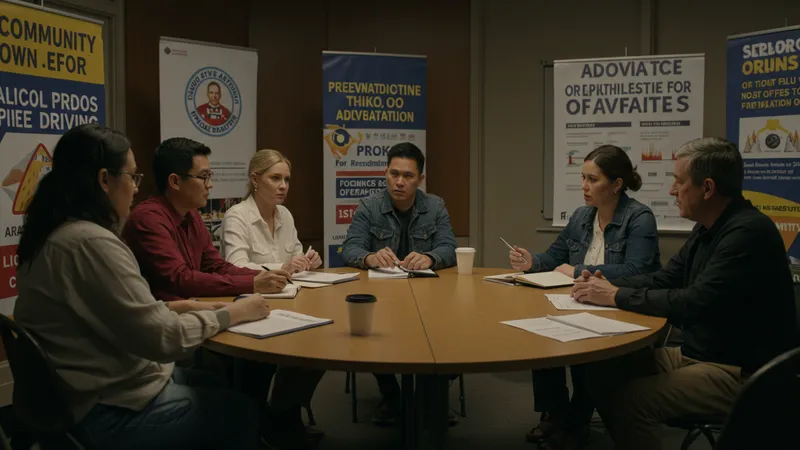
Legal reform in alcohol-impaired driving requires robust citizen engagement. Advocacy groups thrive on public support, pushing for legislative changes that emphasize prevention, rehabilitation, and public safety without being overly punitive.
As an informed citizen, your voice is powerful: supporting local organizations or volunteering can lend strength to those championing change. Legislative change is often gradual, but consistent public pressure can influence political landscapes to accelerate needed reforms.
Technology also plays a role, streamlining processes for connecting lawmakers with constituents to improve transparency in legislative processes. Activism can take various forms—digital campaigns, petitions, or town hall participations—all crucial in shaping the future legal landscape.
Ever curious what big changes are just around the bend? Fasten your seatbelt as we delve into potential upcoming policy transformations, and don’t miss your chance to be part of the movement…
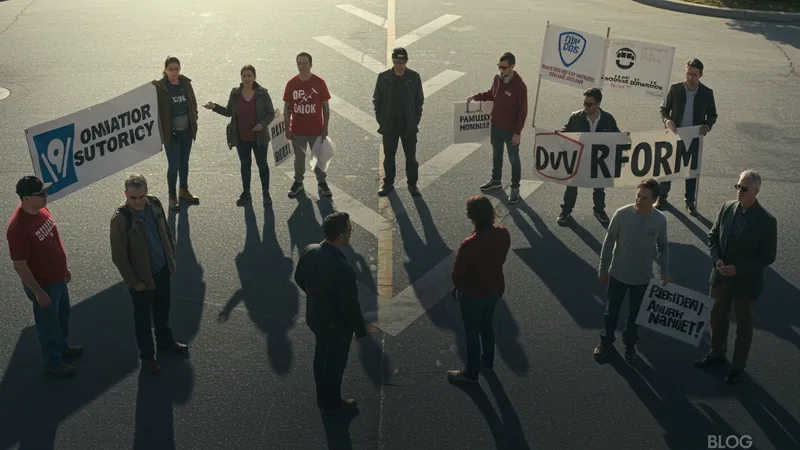
We've traversed a complex landscape of DUI repercussions and evolving reforms. The road isn't straightforward, underscoring the need for continued dialogue and revision. It's clear that while punishment is necessary, supportive frameworks are equally vital for sustainable outcomes.
Perhaps most important is recognizing that change doesn't occur in a vacuum. Collective action, fostering awareness, and legislative modernization form the cornerstone of meaningful reform. Whether through whispers or rallies, every voice matters in reshaping this critical aspect of public safety.
Share these insights, amplify the conversation, and partook in driving innovative solutions. Together, we can pave a more considerate, effective approach for handling DUIs. Join us—because the road to safer streets requires everyone onboard.
As the discussion winds, one thing’s certain: the approach to DUIs is at a turning point. Many exciting developments await those ready to take action. Let’s continue this journey together to a future where informed choices protect us all.